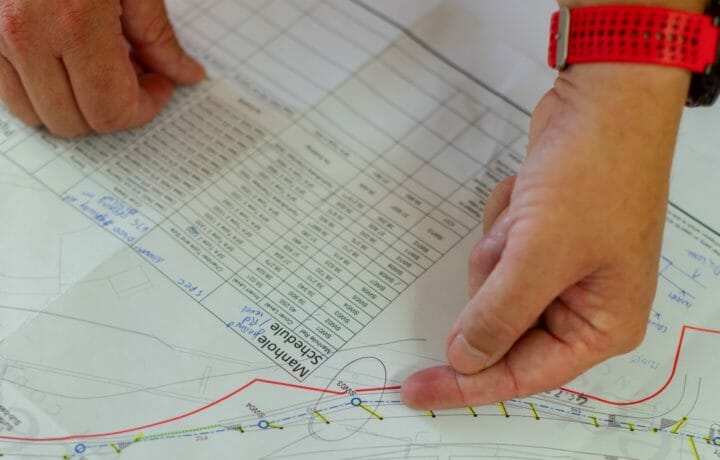When people think of the intelligence community, they tend to focus on the spooks at Langley, the “panopticon” at Ft. Meade, or the National Reconnaissance Office using its satellites to zoom in on dimes atop the Washington Monument. The US intelligence community is quite diverse in purpose, however, and agencies are in the unlikeliest of places.
The Department of Energy (DOE) might seem like an odd place to find spies, but the DOE is responsible for designing, building, and testing the nation’s nuclear arsenal. That’s the kind of thing foreign governments are very interested in, and is the reason the DOE has the Office of Intelligence and Counterintelligence (OIC). Here are a few things you might not know about the OIC.
1. America’s atomic spies can be traced to the Manhattan Project.
The Manhattan Project was a massive undertaking. As a matter of geography, Oak Ridge, Tenn. (where the project was based), was a planned community with 300 miles of roads, a railroad, 17 restaurants, churches, a symphony orchestra, a library, a dozen supermarkets, and 75,000 residents. That’s a lot of area to keep secret. (Even the name “Oak Ridge” was so chosen for its banality.) Meanwhile, the Atomic Energy Commission (precursor to the Department of Energy) wanted valuable, solid intelligence on the Soviet Union’s latest efforts at splitting the atom. The Office of Intelligence and Counterintelligence (OIC) can trace its lineage to this mission.
2. Things got serious because of a 14-year-old boy.
During the Cold War, the U.S. focused on nuclear war with the Soviet Union, but hadn’t much considered nuclear-armed terrorists. That changed in 1974, when the FBI encountered a nuclear terrorist threat in Boston. The FBI immediately alerted the Atomic Energy Commission (AEC), which bungled the operation pretty badly. It took over 12 hours for the AEC to send personnel and equipment from Las Vegas to Boston. Had the event not been a hoax (the “terrorist” was a teenager attempting to extort $1 million from the government), the U.S. might well have lost a major city in a catastrophic attack.
3. The OIC began as three offices.
Before there was an Office of Intelligence and Counterintelligence, the DOE had three offices for such operations: the Office of Intelligence; the Office of Counterintelligence; and another counterintelligence office falling under the purview of the National Nuclear Security Administration (NNSA). In 2006, at the urging of the Department of Energy, Congress authorized the merging of the counterintelligence offices of the DOE and NNSA. Meanwhile, the DOE combined the Office of Intelligence with this new Office of Counterintelligence, resulting in the agency we have today.
(You might be wondering why there were two separate counterintelligence offices to begin with. In 1999, Congress directed NNSA to establish its own counterintelligence division to help the DOE tackle a series of security lapses—the Wen Ho Lee case chief among them. When Congress authorized the merging of the counterintelligence offices of DOE and NNSA, it was skeptical that the plan would work, and provided a sunset provision to re-divide the office in 2010. But four years later, the new agency was deemed a success, and the fiscal year 2010 “National Defense Authorization Act” made today’s OIC official.)
4. The Director of the Office of Intelligence and Counterintelligence is serious business.
Is the director of your intelligence agency quad-lingual? Edward Bruce Held, former director of the Office of Intelligence and Counterintelligence is fluent in English, French, Japanese, and Mandarin. His background is with the Central Intelligence Agency, where he served in many roles, to include a clandestine operations officer; Chief of Station in Asia, Latin America, and Africa; a special assistant to the National Security Advisor; and a special assistant to the Director of Central Intelligence. Before taking over the intelligence arm of the Department of Energy, he was Chief of Counterintelligence for Sandia National Laboratories at Albuquerque.
5. Measures and Signatures Intelligence is an OIC specialty.
Nuclear proliferation and the movement of possible weapons of mass destruction is serious business, and the Office of Intelligence and Counterintelligence is at the forefront of that mission. Measures and signatures intelligence (MASINT) involves detecting and tracking chemical, nuclear, and biological material that might be used in WMDs. According to The Oxford Handbook of National Security Intelligence, the OIC has spent upward of $430 million to purchase and emplace nuclear sensors along international border crossings, with a focus on former Soviet states. Among the signatures for which they are looking include uranium, plutonium, nuclear reactor parts, and heavy water.
That’s just one of the OIC’s missions, of course. The agency itself is made up of three directorates. The Management Directorate does pretty much what you’d expect (it manages). The Intelligence Directorate keeps tabs on the nuclear weapons programs of foreign governments, and has a counterterrorist division that specializes in attempts by non-state actors to get their hands on the Bomb. The Counterintelligence Directorate concerns itself with espionage by foreign governments against United States nuclear facilities and infrastructure.
See more articles in this series:



